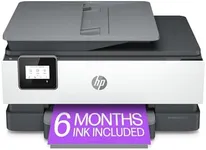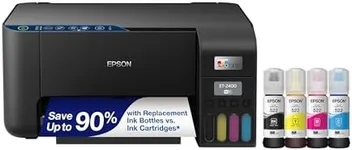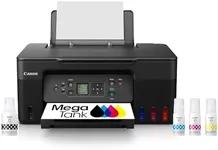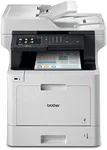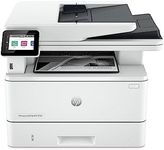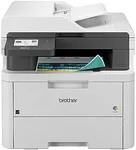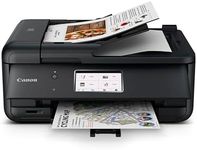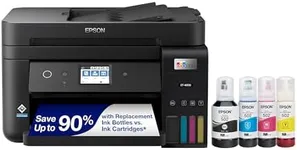Buying Guide for the Best Multifunction Printers
When choosing a multifunction printer, it's important to consider your specific needs and how you plan to use the device. Multifunction printers combine printing, scanning, copying, and sometimes faxing capabilities into one machine, making them a versatile choice for both home and office use. To find the best fit for you, you'll need to evaluate several key specifications and understand how they align with your requirements.Print SpeedPrint speed is measured in pages per minute (PPM) and indicates how quickly a printer can produce documents. This spec is important because it affects how long you'll wait for your print jobs to complete. For light home use, a lower PPM (around 10-20) may be sufficient. For a busy office environment, look for higher speeds (20-40 PPM or more) to ensure efficiency and productivity. Consider your typical print volume and how often you need to print large documents when choosing the right print speed.
Print QualityPrint quality is measured in dots per inch (DPI) and determines the clarity and detail of printed documents and images. Higher DPI values (1200 DPI or more) produce sharper and more detailed prints, which is important for professional documents and high-quality photos. For general document printing, a lower DPI (600-1200 DPI) may be adequate. Think about the type of documents you print most often—if you need high-quality graphics or photos, prioritize higher DPI.
Connectivity OptionsConnectivity options refer to how the printer connects to your devices. Common options include USB, Wi-Fi, Ethernet, and Bluetooth. Wi-Fi and Ethernet are ideal for networked environments, allowing multiple users to access the printer. USB connections are straightforward for single-user setups. Bluetooth is useful for printing directly from mobile devices. Consider your setup and how you prefer to connect your devices to the printer when evaluating connectivity options.
Paper HandlingPaper handling includes the types and sizes of paper the printer can accommodate, as well as the capacity of its paper trays. This spec is important for ensuring the printer meets your document needs. For example, if you frequently print on different paper sizes or types (like envelopes or cardstock), look for a printer with versatile paper handling capabilities. Additionally, a larger paper tray capacity (250 sheets or more) is beneficial for high-volume printing to reduce the frequency of refilling.
Scanning FeaturesScanning features include the resolution, speed, and capabilities of the scanner. Higher resolution (measured in DPI) provides more detailed scans, which is important for digitizing photos or detailed documents. Scanning speed, measured in pages per minute (PPM), affects how quickly you can digitize documents. Some multifunction printers offer additional features like automatic document feeders (ADF) for scanning multiple pages at once. Consider how often you scan documents and the level of detail you need when evaluating scanning features.
Duplex PrintingDuplex printing refers to the printer's ability to print on both sides of a sheet of paper automatically. This feature is important for saving paper and creating professional-looking double-sided documents. If you frequently print reports, brochures, or booklets, a printer with automatic duplex printing can be very beneficial. For occasional use, manual duplex printing (where you manually flip the paper) may suffice, but automatic duplexing is more convenient and efficient.
Ink or Toner CostsInk or toner costs refer to the ongoing expenses of replacing the printer's consumables. This spec is important because it affects the total cost of ownership over time. Inkjet printers typically use ink cartridges, while laser printers use toner cartridges. Consider the cost per page and the yield (number of pages per cartridge) when evaluating this spec. If you print frequently, look for printers with high-yield cartridges or lower cost per page to keep expenses manageable.

